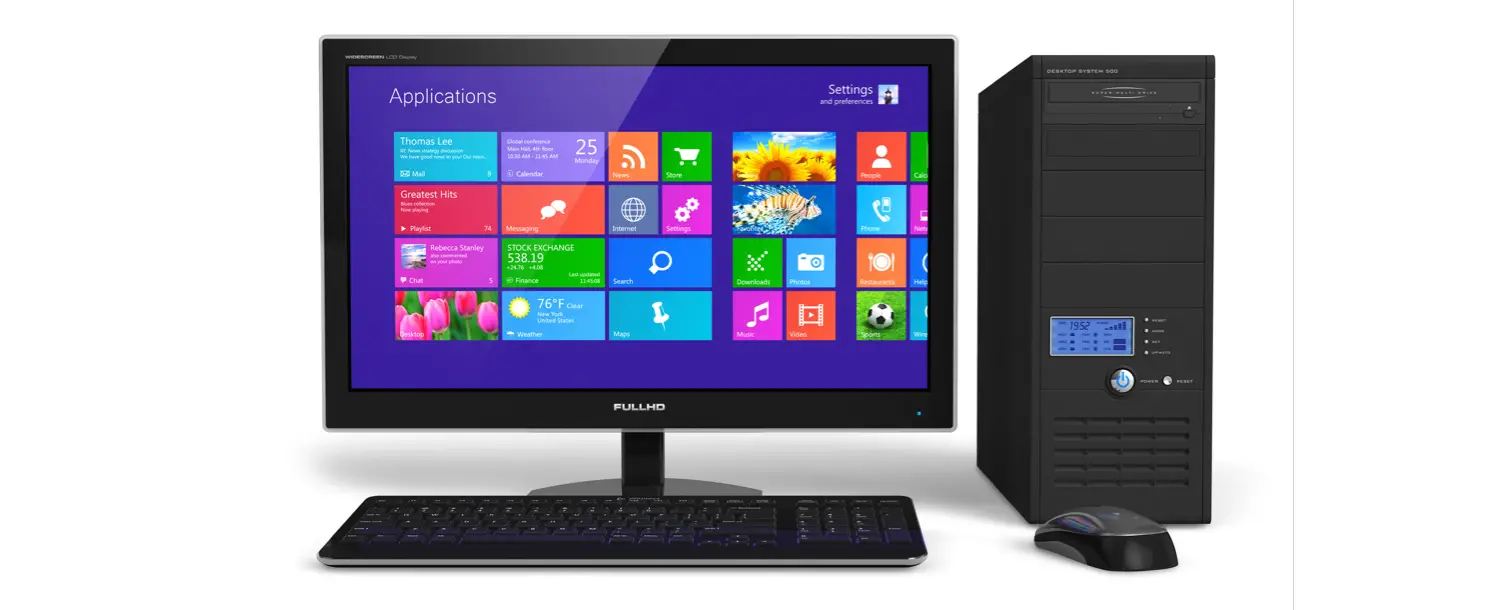How to Clean Up Your Older Windows Computer
Read on for tips for injecting new life into your older Windows PC.
1. Start With Your Desktop
It’s a good idea to begin with your desktop – which people often automatically save files and downloads to, clogging up and slowing down the machine in the process.
Go through everything on the desktop and decide what you need and what you don’t. Delete everything you don’t by sending the files to the Trash and then deleting them permanently.
After this is done, organize the files you do need into folders. Don’t worry that they’re not as easily accessible on the desktop. With Windows’ Start menu Search box, everything is quick to find using the Task Bar.
Organize the files you need into appropriate document folders, which you can save to the relevant My Documents, My Music, My Downloads, My Videos etc sections of the hard drive.
Be sure to also uninstall any desktop shortcuts you don’t need. This won’t delete the programs they sync with, it will simply get rid of the shortcut links.
2. Uninstall Redundant Programs
Another how to clean up your computer tip is to delete any programs you don’t use by using the various uninstall features in Windows.
These include the likes of Add or Remove Programs (Windows 10) or Uninstall a Program (Windows 7).
Windows 8 features: Uninstall Programs to Free Up Disk Space.
When you go to do this, the list that comes up will show you how often programs are used and what space they take up on the hard drive. This, alone, is a great indication of what you don’t need to keep on your PC.
Delete the ones you don’t need by clicking Uninstall and make sure to delete them permanently.
3. Run a Cleaning Function
Windows’ built-in cleanup functions will create more room on your hard drive and help it to run more smoothly and effectively.
Programs such as Disk Cleanup will perform such a function and great several gigabytes of empty space.
Running this function will cut away duplicate files, often created in video or music programs. There’s an Easy Duplicate Finder with Windows, too, which is ideal for sorting out this issue.
Empty the Recycle Bin too. Often users forget that sending something to the Recycle Bin doesn’t completely delete the trashed files.
By performing this cleanup, unnecessary files such as out-of-date Windows installations and temporary internet files will be axed from your machine and create a harmonious working platform.
This technique will always allow you to review which files it is proposing you delete, too. So be sure to look over this and un-check any files you wish to keep. Typically, however, the cleaning tool is excellent at separating the wheat from the chaff.
4. Avoid Auto-Starting Programs
Many programs are designed to start automatically when you log on to your machine.
But sometimes this can cause a computer to slow down and become ineffective. After all, the more programs active at any given time, the slower your computer will ultimately be.
In doing this, you’ll probably discover you have self-starting programs on your machine that you barely ever, or never, use.
You know how your older Windows PC takes an age to boot up? Removing startup programs will help.
Check the various System Configuration tools on your version of Windows for guidance on how to do this. But a word of warning: Windows often require some programs to start automatically in order to run properly. Check this when performing this operation.
In Windows 8 or 10, head to Task Manager and then the Start-up tab. You’ll be presented with a list of programs that launch automatically along with Windows. To highlight just how effective it can be to stop an auto-start, it will also list whether the impact on the startup performance is ‘low’, ‘medium’ or ‘high’.
Click on the programs you know can be disabled from auto-starting, and select Disable. Reverse this by clicking Enable.
5. De-Fragging
De-fragging is a process which compresses files so that your PC can get to data more efficiently and speed up general functionality and performance.
Before carrying out this process, data will have been saved randomly. This simply organizes things, placing random data to the middle of the hard drive’s disc. As a result, accessing the hard drive is much easier and quicker.
The result: your PC will speed up.
Warning: De-fragging a PC with an SSD won’t help it, so avoid this. It will be more detrimental.
Windows 7 offers a Disk Defragmenter listed under Accessories. Windows 8 and Windows 10 will actually do it on its own, weekly.
6. Are You Up to Date?
Computer users often don’t realize that not being up to date on your software can slow your machine down.
Go to Windows Update and check that all of the software is up to date. This includes everything from drivers, security updates, service packs and the like.
Windows 7 users might want to think about upgrading to a more recent version, even if you’re just going one step up to Windows 10.
Want More Great Tips Like This?
Now you know how to clean up your computer, leaving you with a slicker, more effectively-running machine.
But if you’re looking for even more content like this, such as fantastic Audio How-Tos and How To Stop Spam, head on over to our archives.
There you’ll be able to check out our various articles and hacks on working with a Windows PC and much more.

